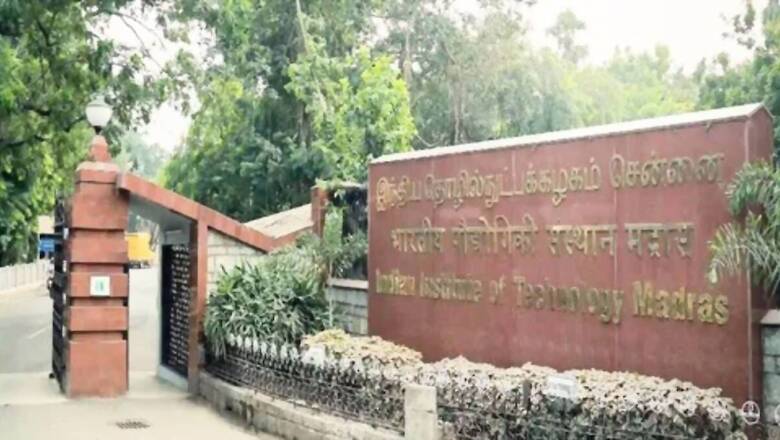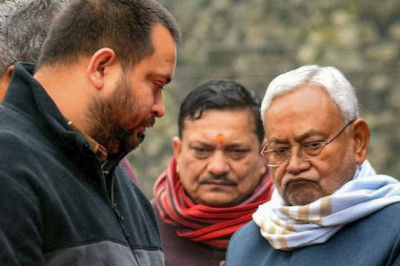From Intelligent Yoga Mats To Wearable Sensors, IIT-Madras To Bring Tech To Sports For Olympics 2036

views
From developing intelligent yoga mats, applications and products like wearable sensors with a focus on improving athlete feedback in games like judo and boxing, among others, Indian Institute of Technology (IIT)-Madras is collaborating with the Union government to bring deep tech into sports by providing technological support for hosting the 2036 summer Olympics, for which India is striving at the moment.
The collaboration is being led by the Centre of Excellence in Sports Science and Analytics (CESSA) at IIT-Madras and National Centre for Sports Science and Research (NCSSR), Sports Authority of India (SAI).
CESSA will work on developing applications and products for various sports. It showcased its current work and plans across sports technology and products for the next few years to drive overall sporting excellence in the country and support structures of the government’s initiatives and various sports bodies’ efforts towards hosting Olympics 2036, at the ongoing two-day ‘Sports Tech Start-Ups’ conclave in the Capital.
CESSA CEO R Ramesh Kumar said that the focus areas of the collaboration include utilising the institute’s knowledge pool and industry connections for start-ups in India and product development for NCSSR; leverage the institute’s expertise in deep tech areas like Artificial Intelligence (AI) and Machine Learning (ML)and computer vision to support sports tech start-ups and; joint research, market study initiatives in sports tech within India and of focus and priority for the union government.
The institute will work on developing tech for six broad categories of sports including — combat sports (wresting, judo, boxing); racket games (badminton and tennis); athletics (long jump, javelin, relay, steeple, race walking); hockey and cricket; shooting sports (archery currently and plans to extend to shooting); and e-sports and chess.
For instance, Kumar said, for combat sports such as wrestling, judo and boxing, the institute will work on innovation in computer-vision, sensor and materials. It will include training analysis, game analysis and game presentation enhancement on media.
“We are also looking at plans for developing tech for Yoga at the international level through computer-vision based systems such as developing intelligent yoga mats and other such tools,” said Kumar.
Similarly, for hockey and cricket, building innovative sensors and video analysis for performance analysis, data analysis, real time feedback and injury prevention. Developing sensor-based hardware and software (swing and force analysis) for racket games. Innovation in sensors and portable ultrasound sound for superficial analysis for athletics; data analytics and performance enhancement for shooting sports. For games like chess, developing technology aids and tools for federations and for educating grassroots.
The institute plans to support 200 sports tech start-ups in a five-year time frame. The first day of the conclave on Friday saw short listed sports tech start-ups making their pitches before a panel of judges.
According to Prof Mahesh Panchagnula, head of CESSA, IIT-Madras, the idea behind this initiative is primarily to bring out the importance of technology in sports and to encourage a whole slew of sports tech start-ups in India.
“Sporting bodies in India are majorly run by the government. There are some private sporting establishments, but they are either too small or cater to only a select group of people. So, first we have to help start-ups understand the ecosystem and convert solutions they may have for use at that level, which means the district level, state level athletics should ultimately benefit from technology,” he said.
The idea is to create a farm system in India where there is good technology, nutritional help, leg motion capture, biomechanics, such that if an athlete goes wrong at a point, it shouldn’t just be left to the coach’s eyes, but there’s a mechanism through which the movement could be watched, studied and feedback could be given, the Prof said.
“If we are to be contenders in the Olympics, we need athletes to be at the global level. Imagine a single mobile phone at the umpire side being able to capture the bowler’s action completely, including angles, biomechanics of the person, what parts are being stressed, the coach can simply watch that quantified video and give the athlete feedback on how to improve or what went wrong. We are going to work with sports coaches and athletes to understand their needs and work on developing it,” he added.
Stay ahead with all the exam results updates on News18 Website.




















Comments
0 comment